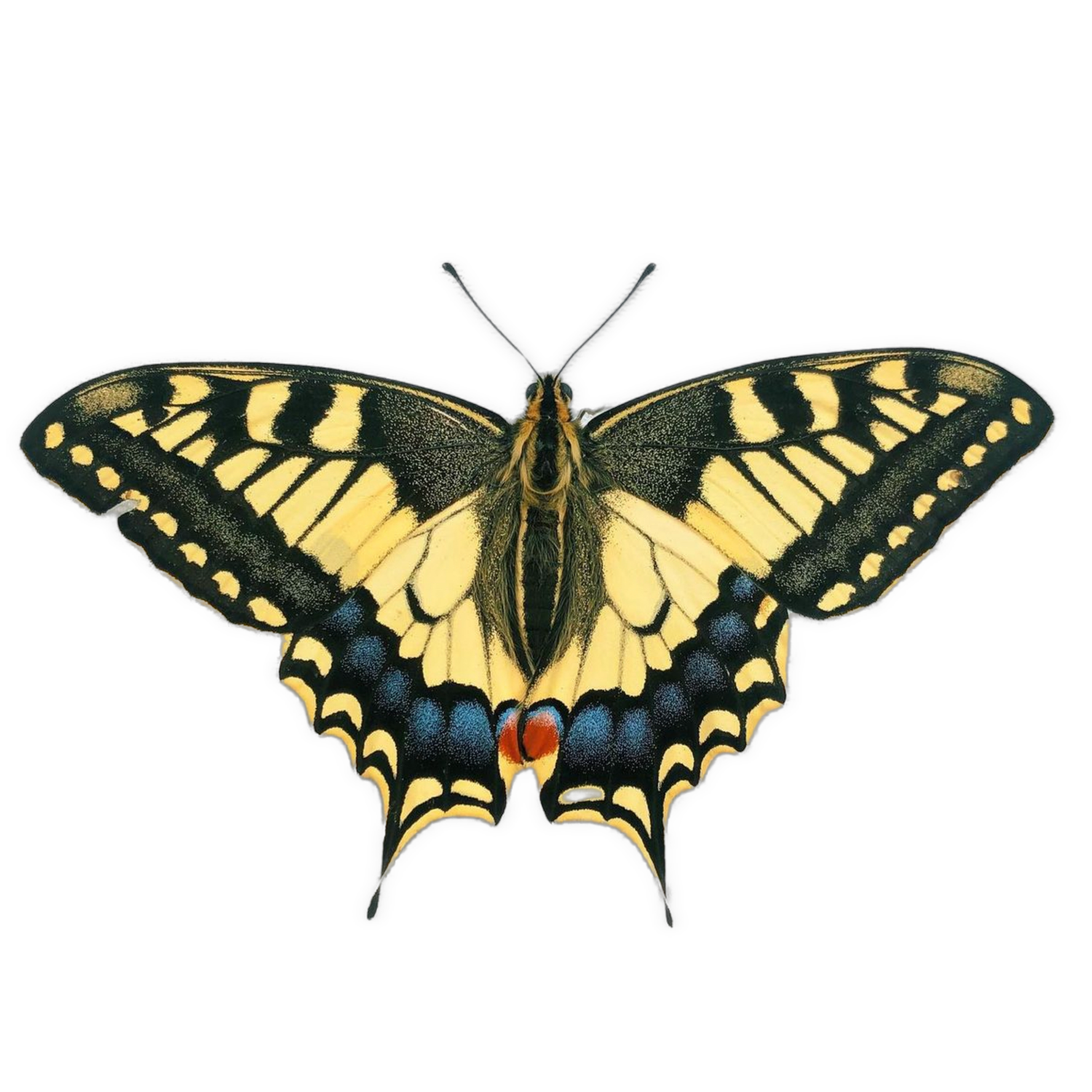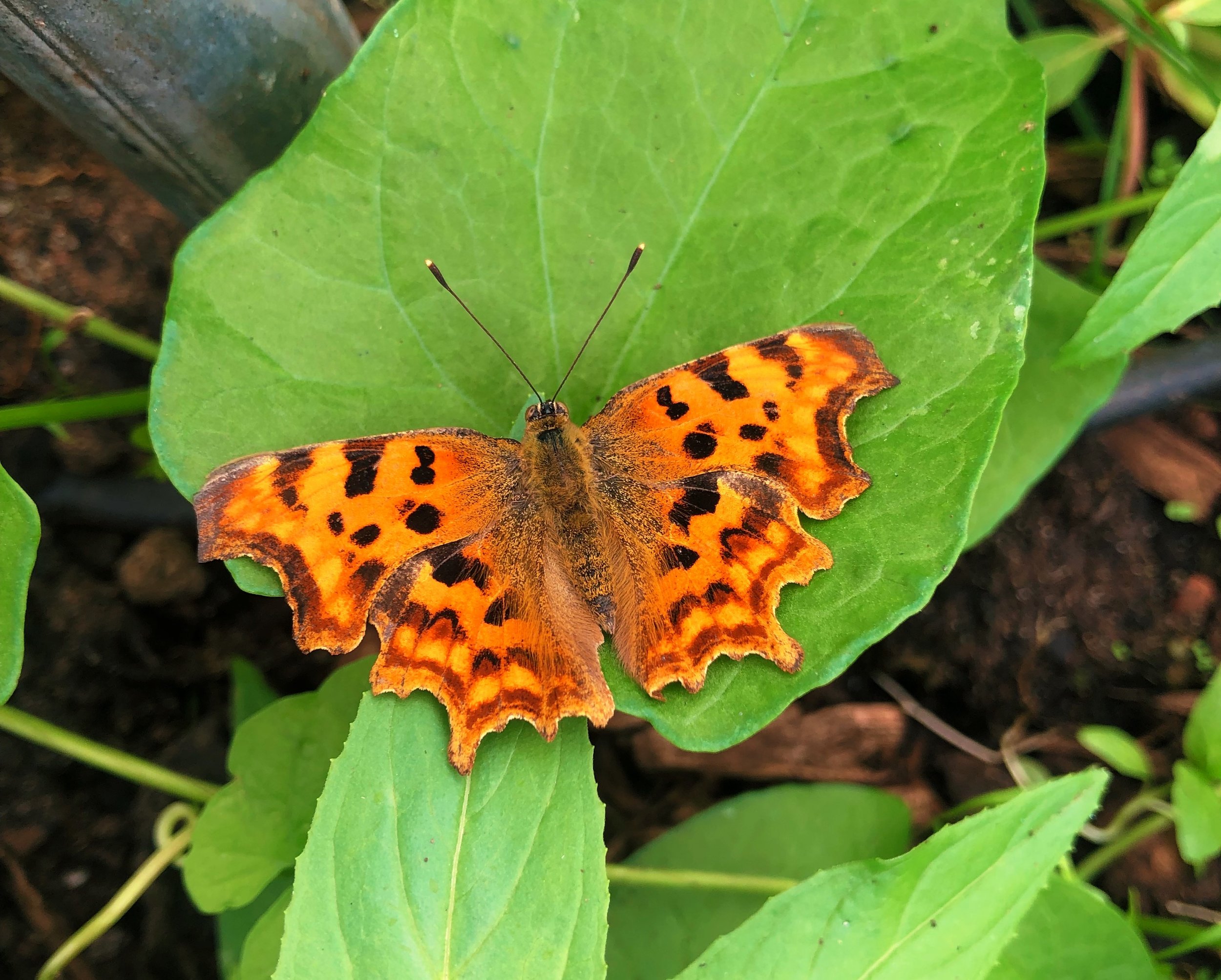Native Butterflies
This care guide refers to the five native butterfly species which may be included in the Native Butterfly Mix (available to order here): Peacocks; Painted Ladies; Commas; Red Admirals; and Small Tortoiseshells. Very easy to care for, these are perfect for any experience level.

Depending on when your order is placed, you may receive eggs (pictured below), or larvae (caterpillars). Eggs start off a blue-green colour, and may be laid singularly or in groups depending on which species has laid them.
On arrival, please move the contents into another plastic container, e.g. takeaway tub or tupperware, which should be kept with the lid closed to prevent moisture escape, which can dessicate the young caterpillars. Open the container once or twice a day to allow fresh air in and prevent mould. It is a good idea to line the base of the container with tissue paper to absorb excess moisture, as young larvae can drown in large water droplets. This also helps to maintain a stable humidity level.
Within a few days, often sooner, the eggs begin to darken, eventually turning black when the caterpillar inside is fully formed. Provide fresh nettle leaves when this happens. Caterpillars will begin feeding very quickly and you will notice bite marks in the leaves within a day or two.
By around 10 days after hatching, the caterpillars will be roughly half-grown (see above photo), and it may be possible to discern which species they are based on patterning and colouration.
From this point they will continue to grow quickly. Once the caterpillars reach about 1cm long, I recommend moving them to a mesh cage as they benefit from the air flow and slightly drier conditions. Provide them with Nettles - cut stems stood in water are ideal and usually stay fresh for a few days.

By about 3 weeks, the caterpillars will be ready to pupate. At this point, they will find somewhere safe to suspend themselves in a J-shape (see photo above: right). The caterpillar attaches itself to a stem or the side/top of the enclosure with a small silk pad, and will hang there for 1-3 days whilst it prepares to shed its exoskeleton for the final time. They will remain largely motionless during this time and should not be disturbed.
Once the larval skin has been shed, the pupa (also known as a chrysalis) is very soft and vulnerable, so must be left alone to harden for at least a couple of days. After this, you can either leave the pupae where they are to emerge, or move to another enclosure. If they are not in the way of other larvae I would recommend leaving them in place.
The pupae do not require any special care, but should not be handled unless necessary (e.g. when moving between enclosures). Normal room temperature is ideal, though it is a good idea to keep the pupae out of direct sunlight and away from anywhere particularly hot, like a radiator - in nature, caterpillars normally pupate in shaded areas among the undergrowth.
This stage lasts about two weeks, though during the heat of summer can be as short as one week, with butterflies typically emerging in around 10-14 days.
Although not one of our native species, the photo above shows Monarch butterfly pupae and illustrates nicely how the they change before emerging. The pupae will darken from their original colour to almost black, but upon closer inspection you can often see the wing patterns of the butterfly within - an indication that they will emerge within hours or days.
Upon emerging from the pupa, the butterfly must hang upside-down to inflate its wings - do not be alarmed if the wings appear small and crumpled when they first hatch, this is normal! Usually the wings are fully inflated within 30 mins, but it can take a few hours for them to solidify so they should not be disturbed or handled.
Adult butterflies can be released when the lifecycle is complete, or you may wish to keep them for a few days to enjoy their beauty. This guide is ideal if you plan to keep them - Caring for Adult Butterflies. If you intend to release the butterflies, it is a good idea to wait 24 hours after they emerge so that their wings have hardened, and offer sugar water as a food source - this gives them a bit of a head start in the wild whilst they search for nectar flowers and fallen fruit to drink from.
The slideshow below shows photos of various species and stages.


















